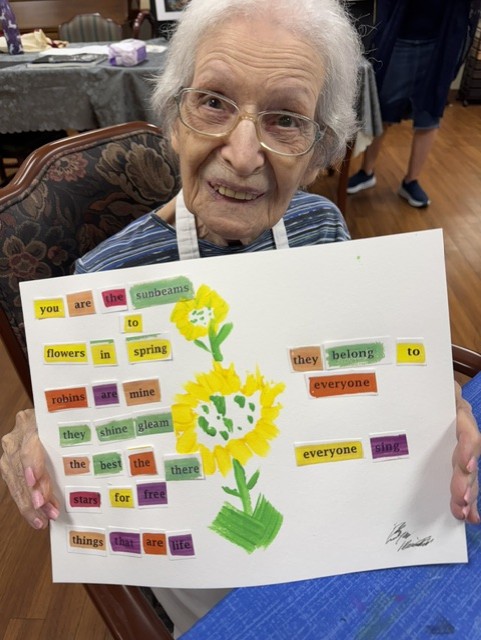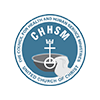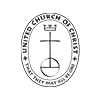Assessing for Hope
As a chaplain working with older adults in long-term care, part of my call is to complete spiritual assessments with residents. In obtaining their spiritual histories, I use the HOPE model. The tool allows me to talk with residents about what brings them hope and joy among other things. When a resident arrives to the community, we complete spiritual histories, assessments and conversations about hope. Hope is a journey, however, and I am continually reassessing residents for hope along their journey.
What Is Hope?
Although the origin of the word hope is not known, it has been associated with words in Old English, Dutch and German. From these words, we get such images as “trusting in,” “having confidence in” and a possible connection with a word that means “leaping in expectation.”
Joan Chittister explains hope in this way: “Hope is not a denial of reality. But it is also not some kind of spiritual elixir. It is not a placebo infused out of nowhere. Hope is a series of small actions that transform darkness into light. It is putting one foot in front of the other when we can find no reason to do so at all.” (Joan Chittister, Scarred by Struggle, Transformed by Hope)
What Brings Hope to Older Adults: Faith
In conversations with older adults over the last several years, I have heard a variety of things that bring older adults hope. Typically, though, they consistently identify three main items that bring them hope.
The first is faith. Residents talk of their faith in God to see them through challenging times and how God’s presence provides hope during their journey. Chittister once wrote, “Hope is rooted in the past but believes in the future.” (Joan Chittister, Scarred by Struggle, Transformed by Hope) Residents often reflect on challenging times in their past and share how God was present with them during those times. They identify that they moved through periods of darkness into spaces of light, with God at their side. In looking back, many residents have identified that when struggles arise in their lives now, the hope is that God will be with them in their current and future struggles, just as God was present with them during past challenges.
What Brings Hope to Older Adults: Family
Residents also point out that family is a source of hope. They talk about how their families have been with them during health challenges and when making difficult decisions. Residents share that when a challenge arises in the future, they trust that family will be there for them again, giving them hope.
Often, residents talk about how their grandchildren and great-grandchildren give them hope. Children bring such joy and abundant life to the lives of the residents when they visit. I see such light and love in the eyes and smiles of residents when they spend time with grandchildren and great-grandchildren. Walking into residents’ rooms, I notice many have pictures of grandchildren and great-grandchildren around their room. I have felt that sense of hope, that sense of “leaping with expectation,” as residents wait for little ones to come for a visit.
What Brings Hope to Older Adults: Home
Finally, residents talk of “going home” as a source of hope. For many residents in the Fast Track Rehab neighborhood, they feel hope as their therapy goals progress, inching them closer to literally going home. Other long-term residents have talked with me about hope in one day going to their spiritual home. They discuss how God has been with them throughout their lives and will continue to be with them when they transition from this life to the next space. Their hope is rooted in trust. They believe that because God has been with them throughout their journey here, then it will be no different in the future.
Sources of Despair
Residents come to long-term care communities having faced many obstacles. Poor health, loss of driving privileges, the death of a spouse, inability to attend worship in their churches, mosques, temples, etc. and selling their homes are just a few of these challenges. Challenges may continue to arise for residents after their arrival. It is easy to look back and feel despair.
Joan Erickson, in completing her husband’s work, added a last stage of psychosocial development to his previous eight stages. In writing about Joan Erikson’s work, one writer noted, “Despair becomes even more of a lurking possibility in the ninth stage than it was in the eighth. In this stage, with the increased loss of physical abilities, elders often begin to mistrust themselves and the environment. Autonomy is being continually whittled away.” (Joan Erikson’s 9th Stage of Psychosocial Development, from the blog Life Transitions and Life Completion.) Despair along the journey for older adults is continually possible.
Hope Is a Journey
Chittister notes that “The spiritual task of life is to feed the hope that comes out of despair. Hope is not something to be found outside of us. It lies in the spiritual life we cultivate within.” (Joan Chittister, Scarred by Struggle, Transformed by Hope) As I talk with residents, I am continually assessing for hope versus despair in their lives. Challenges may arise that move a resident from hope to despair. Yet, often, I find that residents are able to find hope again as they journey forward. They remember that God is with them. They remember that their families are present. They remember that they are a part of a community. And they remember that they are not walking alone. In the dark times, hope provides the light to move forward.
What brings you hope?
View all articles by:






















